Canopic Jars: Funerary Tradition Of Ancient Egyptians And Their Beliefs In Afterlife
A. Sutherland - AncientPages.com - Ancient Egyptians sincerely believed in the afterlife, and a complex ritual set of burial customs was necessary to ensure an afterlife.
Mummification was an essential part of this ritual. All vital internal organs had to accompany the deceased to the underworld to be reborn. However, the dead's heart was never among the organs chosen for preservation in canopic jars.
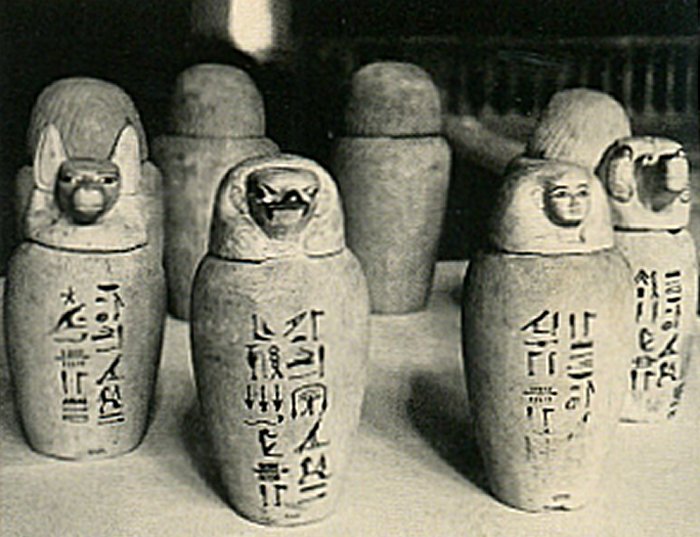 Limestone canopic jars with the heads of Qebesenuef, Duamutef, Hapy, Imsety. Originally these jars were decorated with human heads. Image credit: Egyptian Museum, Cairo
Limestone canopic jars with the heads of Qebesenuef, Duamutef, Hapy, Imsety. Originally these jars were decorated with human heads. Image credit: Egyptian Museum, Cairo
According to Egyptian beliefs, this precious organ was the source of wisdom and the seat of memory and emotions of the human being.
Therefore the heart was always left inside the mummified corpse for use in the afterlife. Canopic jars were ritual vessels containing internal organs removed from the deceased's body during mummification.
Their name, "canopies," comes from Canopus, an ancient Egyptian city in the Nile Delta, where they were first discovered. According to Strabo, Canopus was the pilot of a ship that belonged to King Menelaus of Sparta during the Trojan War.
Ancient legend says Canopus received a fatal snake bite during his stay on the Egyptian coast. In the vicinity of this tragic place, king Menelaus had erected a temple dedicated to Canopus, and a city of Canopus developed around this place.
Canopic jars of Tutankhamun; 1333–1323 BC; alabaster; total height: 85.5 cm; Egyptian Museum (Cairo). Jon Bodsworth - http://www.egyptarchive.co.uk/html/cairo_museum_49.html - Copyrighted free use
The canopies were usually made of calcite (alabaster), wood, limestone, and sometimes ceramic and earthenware. Four canopies were always placed in the burial chamber near the coffin.
Each canopy protected a different organ.
Clay canopies with flat covers and only sometimes covered with texts were already known during the Old Kingdom.
Later, in the Middle Kingdom, they were adorned with human heads.
In 1320-1085 BC (the Ramesside Period) and during the 19th and 20th dynasties, the canopies were adorned with the heads of four Horus sons. They were the guardians of the intestines of the deceased.
Canopic jars of Ruiu; 1504–1447 BC; painted pottery; Metropolitan Museum of Art (New York City). Image credit: English: Rogers Fund, 1935 - CC0 1.0
These four gods were the baboon-headed Hapy, who guarded the lungs (protected by Nephthys). The human-headed Imsety guarded the liver (and who was himself guarded by Isis); the jackal-headed Duamutef guarded the stomach (often protected by Neith); and the falcon-headed Qebesenuef, guardian of the intestines (who was often protected by Serket).
The earliest reference to these four gods can be found in the "Pyramid Texts." They were the children and, simultaneously, the "souls" of Horus and the "friends of the king." They assisted the deceased monarch in his journey to the sky ("Pyramid Texts").
Jean-François Champollion, a French scholar, philologist, and orientalist, deciphered Egyptian hieroglyphs. He contributed much to our knowledge about ancient Egypt and the jars linked to the funerary cult of ancient Egypt.
Written by – A. Sutherland AncientPages.com Staff Writer
Updated on January 21, 2023
Copyright © AncientPages.com All rights reserved. This material may not be published, broadcast, rewritten or redistributed in whole or part without the express written permission of AncientPages.com
Expand for referencesReferences:
Erman A. A Handbook of Egyptian Religion
Colin Macfarquhar C. Gleig G. Encyclopædia Britannica: Or, A Dictionary of Arts ..., Volym 4
More From Ancient Pages
-
 LIDAR Discovers Two Remarkably Large Sites In The Amazon And Evidence Of Early Urbanism
Archaeology | May 25, 2022
LIDAR Discovers Two Remarkably Large Sites In The Amazon And Evidence Of Early Urbanism
Archaeology | May 25, 2022 -
 Hazelnuts -‘Time Capsule’ To Reconstruct Landscape Of Ancient Forests In Sweden
Archaeology | Mar 5, 2024
Hazelnuts -‘Time Capsule’ To Reconstruct Landscape Of Ancient Forests In Sweden
Archaeology | Mar 5, 2024 -
 Underground Civilizations – Secret Subterranean Corridors And Strange People – Part 2
Civilizations | May 10, 2019
Underground Civilizations – Secret Subterranean Corridors And Strange People – Part 2
Civilizations | May 10, 2019 -
 Controversial Statue Of Anglo-Norman Knight William Marshal In Pembroke Faces Criticism
Artifacts | May 10, 2022
Controversial Statue Of Anglo-Norman Knight William Marshal In Pembroke Faces Criticism
Artifacts | May 10, 2022 -
 Ancient Trade Routes Between Iran And Mesopotamia – Uncovered
Archaeology | Dec 4, 2015
Ancient Trade Routes Between Iran And Mesopotamia – Uncovered
Archaeology | Dec 4, 2015 -
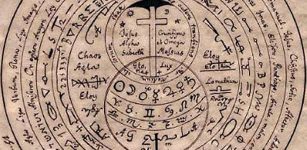 Magical Manuscripts With Thousands Of Ancient Spells Discovered In Germany
Archaeology | Aug 28, 2017
Magical Manuscripts With Thousands Of Ancient Spells Discovered In Germany
Archaeology | Aug 28, 2017 -
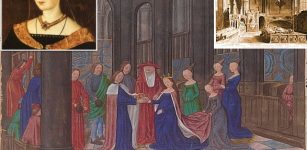 Solving The Mystery Of Westminster Abbey’s Lost Chapel And Disemboweled Saint – New Evidence
Archaeology | Dec 1, 2022
Solving The Mystery Of Westminster Abbey’s Lost Chapel And Disemboweled Saint – New Evidence
Archaeology | Dec 1, 2022 -
 Wonderful Long-Lived Nymphs In Greek And Roman Mythologies
Featured Stories | Mar 29, 2024
Wonderful Long-Lived Nymphs In Greek And Roman Mythologies
Featured Stories | Mar 29, 2024 -
 Ancient Petroglyph Code Cracked By Archaeological Explorers
News | Apr 10, 2020
Ancient Petroglyph Code Cracked By Archaeological Explorers
News | Apr 10, 2020 -
 Historic Shipwreck Mentor Reveals Its Underwater Secrets
Archaeology | May 14, 2022
Historic Shipwreck Mentor Reveals Its Underwater Secrets
Archaeology | May 14, 2022 -
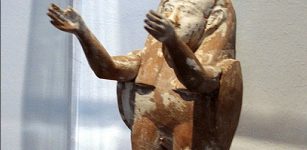 Ancient Beliefs About The Soul
Civilizations | Mar 8, 2016
Ancient Beliefs About The Soul
Civilizations | Mar 8, 2016 -
 Ancient Stone Monoliths In Ethiopia Are 1,000 Years Older Than Previously Thought
Archaeology | Dec 11, 2021
Ancient Stone Monoliths In Ethiopia Are 1,000 Years Older Than Previously Thought
Archaeology | Dec 11, 2021 -
 Ancient Stone Ram Figurine – Symbol Of Abundance And Great Courage – Unearthed In Old Cemetery
Archaeology | Oct 2, 2020
Ancient Stone Ram Figurine – Symbol Of Abundance And Great Courage – Unearthed In Old Cemetery
Archaeology | Oct 2, 2020 -
 Strange Radiation Case – Medical Files Secretly Erased?
Featured Stories | Sep 13, 2019
Strange Radiation Case – Medical Files Secretly Erased?
Featured Stories | Sep 13, 2019 -
 Secrets Of The Lost Ancient Sahara Civilization
Civilizations | Oct 26, 2018
Secrets Of The Lost Ancient Sahara Civilization
Civilizations | Oct 26, 2018 -
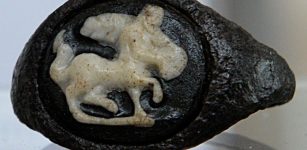 Roman Treasures Unearthed At Ancient Site Of Tiel, Netherlands
Archaeology | Apr 2, 2017
Roman Treasures Unearthed At Ancient Site Of Tiel, Netherlands
Archaeology | Apr 2, 2017 -
![Photo taken on Dec 20, 2015 shows hoof-shaped gold ware unearthed from the main coffin in the Haihunhou (Marquis of Haihun) cemetery, East China's Jiangxi province. [Photo/Xinhua]](https://www.ancientpages.com/wp-content/uploads/2015/12/MarquisofHaihuntomb1-307x150.jpg) Does A 2,000-Year-Old Tomb Belong To Marquis of Haihun? – Search For His Seal Continues
Archaeology | Dec 25, 2015
Does A 2,000-Year-Old Tomb Belong To Marquis of Haihun? – Search For His Seal Continues
Archaeology | Dec 25, 2015 -
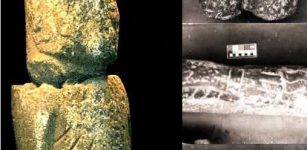 Inscription On Pokotia Monolith Reveals Sumerians Visited Peru Thousands Of Years Ago
Ancient Symbols | Sep 1, 2015
Inscription On Pokotia Monolith Reveals Sumerians Visited Peru Thousands Of Years Ago
Ancient Symbols | Sep 1, 2015 -
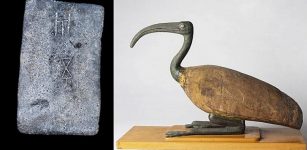 Has The Mystery Of Bronze Age Tin Been Solved?
Archaeology | Oct 3, 2019
Has The Mystery Of Bronze Age Tin Been Solved?
Archaeology | Oct 3, 2019 -
 Something Never-Before-Seen Is Hidden Beneath 15 Giant Viking Burial Mounds Spotted By Radar In Norway
Archaeology | Jan 19, 2021
Something Never-Before-Seen Is Hidden Beneath 15 Giant Viking Burial Mounds Spotted By Radar In Norway
Archaeology | Jan 19, 2021


